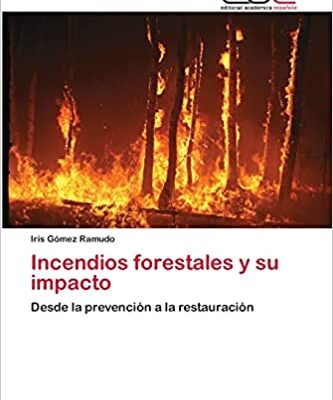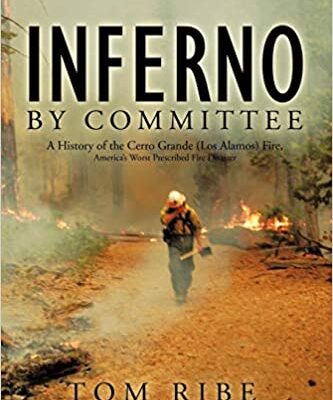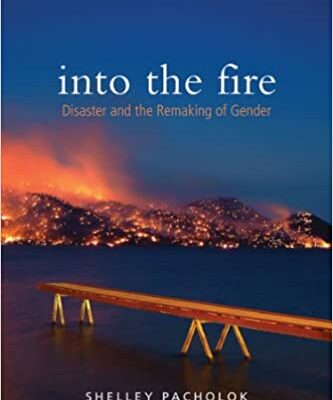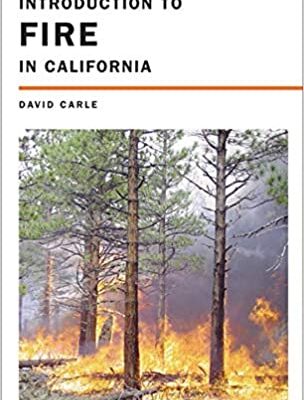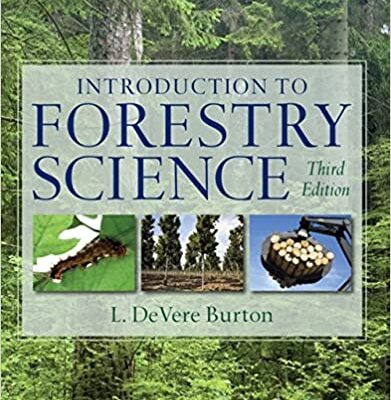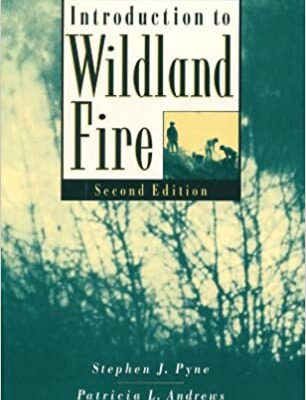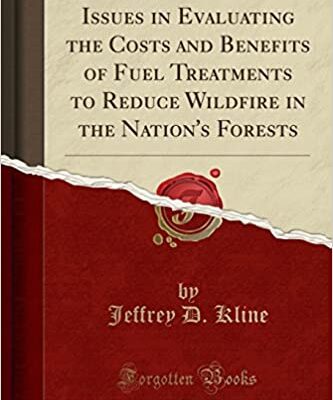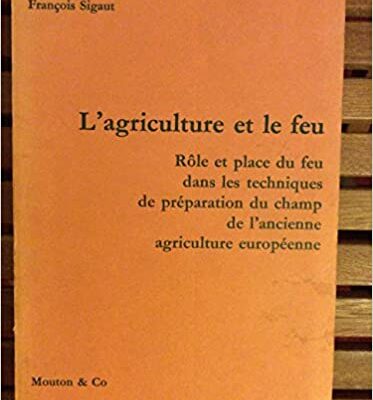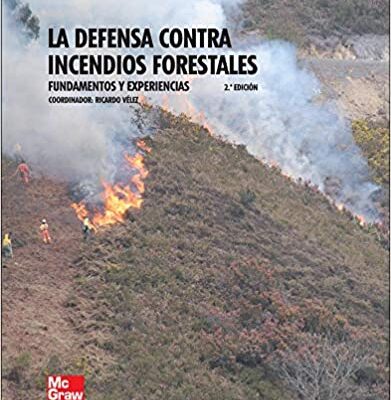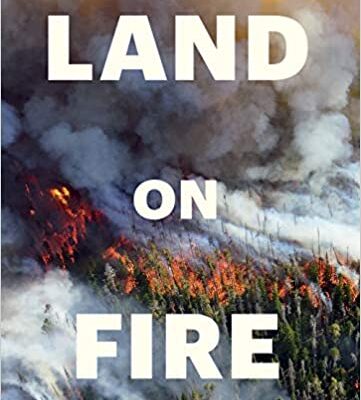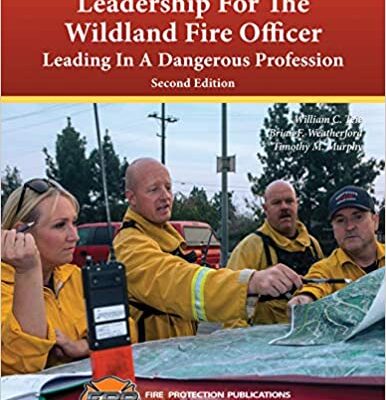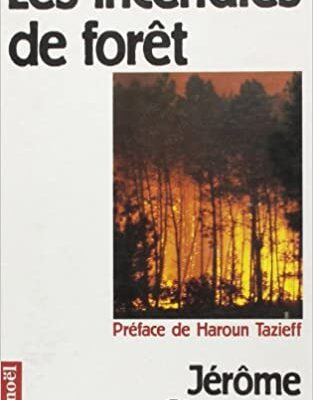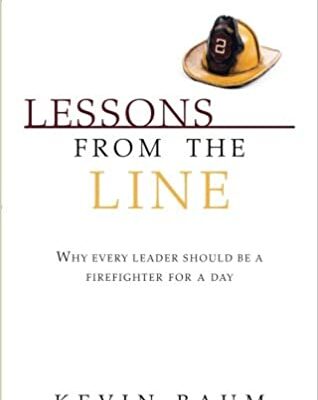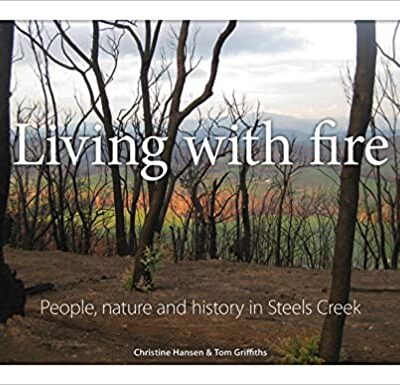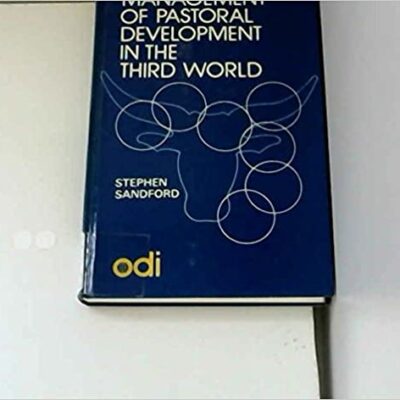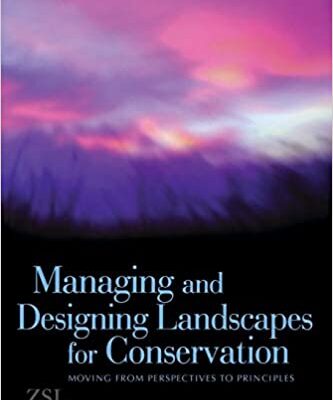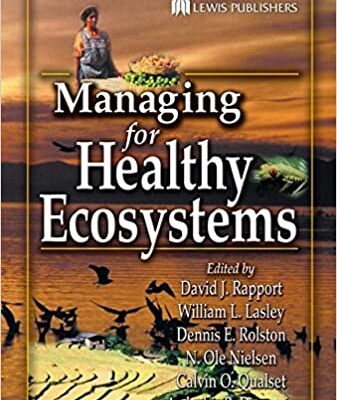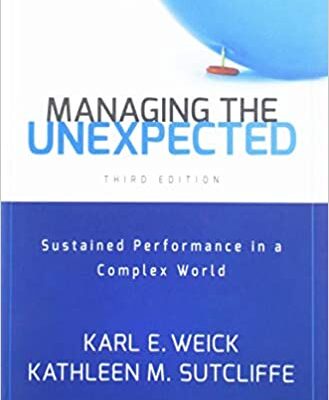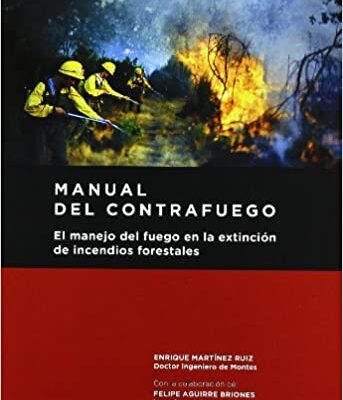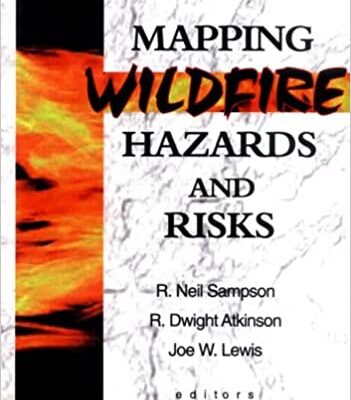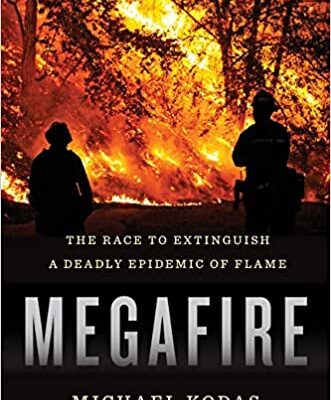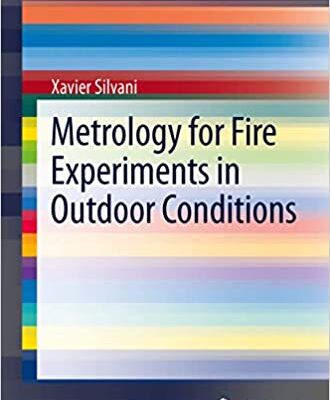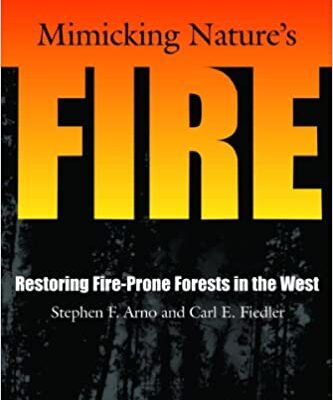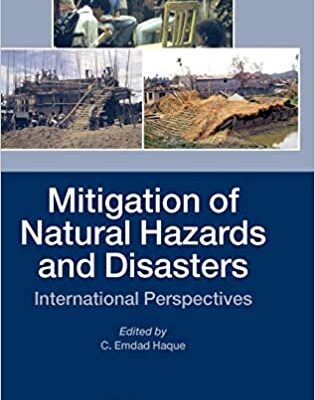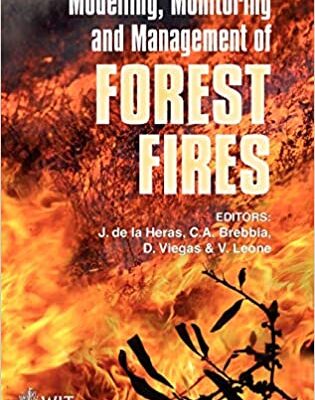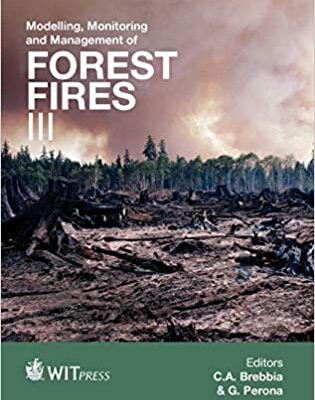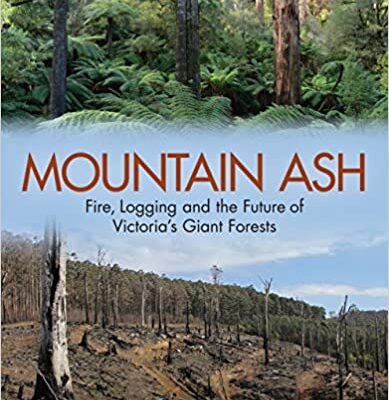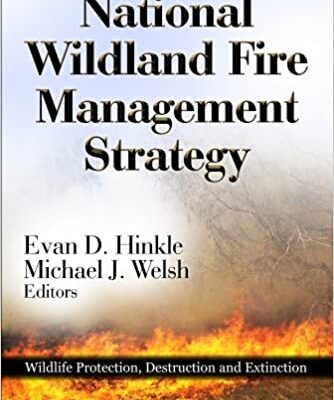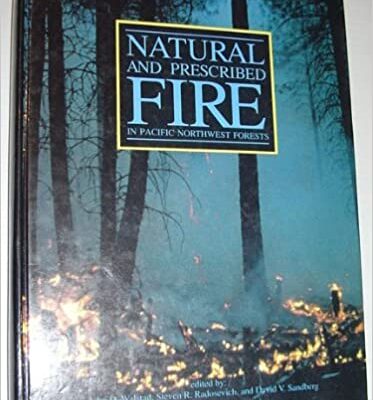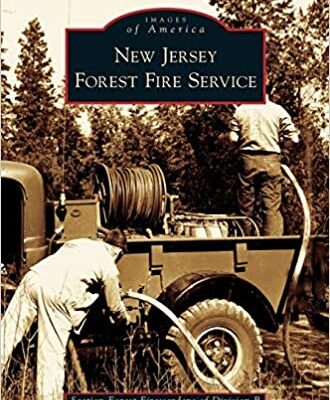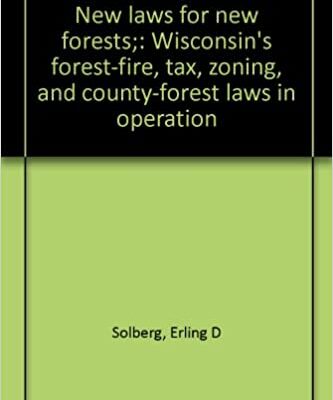Incendios Forestales (Spanish Edition)
Paperback – January 1, 2004
Spanish Edition by M. a. Porrero Rodriguez(Author)
Paperback – January 1, 2004
Spanish Edition by M. a. Porrero Rodriguez(Author)
Incendios forestales y su impacto: Desde la prevención a la restauración (Spanish Edition)
Paperback – March 6, 2014
Spanish Edition by Iris Gómez Ramudo(Author)
Según datos del MAGRAMA (Ministerio de Agricultura, Alimentación y Medio Ambiente), en el último año se han quemado más de 53.286 hectáreas de bosque en España en más de 2.495 incendios, 16 de ellos incluidos en los considerados como Grandes Incendios Forestales. El año 2012, con 189.321 hectáreas arrasadas por el fuego, es considerado uno de los peores de los últimos 20 años. Los incendios forestales se han convertido en un importante problema ambiental, tanto en nuestro país como a nivel mundial. En el presente proyecto, a modo de revisión, se exponen sus principales factores, causas y efectos, así como una serie de acciones que se deben llevar a cabo en las tareas de prevención y detección, durante la propagación y en la extinción de incendios, sin olvidarnos de la restauración de las superficies afectadas.
Paperback – March 6, 2014
Spanish Edition by Iris Gómez Ramudo(Author)
Según datos del MAGRAMA (Ministerio de Agricultura, Alimentación y Medio Ambiente), en el último año se han quemado más de 53.286 hectáreas de bosque en España en más de 2.495 incendios, 16 de ellos incluidos en los considerados como Grandes Incendios Forestales. El año 2012, con 189.321 hectáreas arrasadas por el fuego, es considerado uno de los peores de los últimos 20 años. Los incendios forestales se han convertido en un importante problema ambiental, tanto en nuestro país como a nivel mundial. En el presente proyecto, a modo de revisión, se exponen sus principales factores, causas y efectos, así como una serie de acciones que se deben llevar a cabo en las tareas de prevención y detección, durante la propagación y en la extinción de incendios, sin olvidarnos de la restauración de las superficies afectadas.
Incendios forestales: definiendo el problema, ecología y manejo, participación social, fortalecimiento de capacidades, e (Spanish Edition)
Inferno by Committee: A History of the Cerro Grande (Los Alamos) Fire, America's Worst Prescribed Fire Disaster
Paperback – May 10, 2010
Paperback – May 10, 2010
Interagency Airtanker Base Operations Guide
Paperback – October 12, 2013
by National Wildfire Coordinating Group (Author)
The objectives of this guide are to: Define and standardize national interagency operating procedures at large airtanker bases to ensure safe and efficient operations; Support fire policy through interagency coordination; Facilitate the exchange of personnel from all wildland fire suppression agencies during periods of high fire activity through standardization; Provide a common, interagency approach in the State, Federal, and Tribal Government’s contract related responsibilities; Provide common forms, checklists, orientations outlines, and special instructions for both contractor employees (retardant supplier personnel, pilots, mechanics) and government employees at airtanker bases; Provide a framework, which allows each airtanker base to provide a local base supplement with site specific guidance.
Paperback – October 12, 2013
by National Wildfire Coordinating Group (Author)
The objectives of this guide are to: Define and standardize national interagency operating procedures at large airtanker bases to ensure safe and efficient operations; Support fire policy through interagency coordination; Facilitate the exchange of personnel from all wildland fire suppression agencies during periods of high fire activity through standardization; Provide a common, interagency approach in the State, Federal, and Tribal Government’s contract related responsibilities; Provide common forms, checklists, orientations outlines, and special instructions for both contractor employees (retardant supplier personnel, pilots, mechanics) and government employees at airtanker bases; Provide a framework, which allows each airtanker base to provide a local base supplement with site specific guidance.
Into the Fire: Disaster and the Remaking of Gender
Hardcover – May 21, 2013
by Shelley Pacholok(Author)
Hardcover – May 21, 2013
by Shelley Pacholok(Author)
Introduction to Fire in California (Volume 95) (California Natural History Guides)
Paperback – August 4, 2008
by David Carle(Author)
What is fire? How are wildfires ignited? How do California's weather and topography influence fire? How did the California Indians use fire? In the spirit of his highly acclaimed Introduction to Air in California and Introduction to Water in California, David Carle now turns to another fundamental element of the natural world, giving a fascinating and concise view of this complex topic. His clearly written, dramatically illustrated book will help Californians, including the millions who live near naturally flammable wildlands, better understand their own place in the state's landscape. Carle covers the basics of fire ecology; looks at the effects of fire on wildlife, soil, water, and air; discusses firefighting organizations and land management agencies; explains current policies; and explores many other topics.
Paperback – August 4, 2008
by David Carle(Author)
What is fire? How are wildfires ignited? How do California's weather and topography influence fire? How did the California Indians use fire? In the spirit of his highly acclaimed Introduction to Air in California and Introduction to Water in California, David Carle now turns to another fundamental element of the natural world, giving a fascinating and concise view of this complex topic. His clearly written, dramatically illustrated book will help Californians, including the millions who live near naturally flammable wildlands, better understand their own place in the state's landscape. Carle covers the basics of fire ecology; looks at the effects of fire on wildlife, soil, water, and air; discusses firefighting organizations and land management agencies; explains current policies; and explores many other topics.
Introduction to Forestry (MCGRAW HILL SERIES IN FOREST RESOURCES)
Subsequent Edition
by Grant William Sharpe(Author)
Subsequent Edition
by Grant William Sharpe(Author)
Introduction to Forestry Science, Soft Cover
3rd Edition
by L. Devere Burton(Author)
Practical, easy to understand, and up-to-date, INTRODUCTION TO FORESTRY SCIENCE, Third Edition provides readers with a comprehensive overview of the principles and practices of forest management that are commonly practiced in the United States. Appropriate for anyone interested in forestry or natural resources, this book is filled with visual aids and tools as well as career profiles which give readers an overview of what it might be like to work in the forest industry and demonstrate how concepts are applied in the real world. In addition to covering the basics of the biological processes necessary for the creation of forests, topics such as the economic impact of forests on the U.S. economy, government historical events and policies, regional differences in forests and forest management, and laws and regulations that govern the use of forests are presented.
3rd Edition
by L. Devere Burton(Author)
Practical, easy to understand, and up-to-date, INTRODUCTION TO FORESTRY SCIENCE, Third Edition provides readers with a comprehensive overview of the principles and practices of forest management that are commonly practiced in the United States. Appropriate for anyone interested in forestry or natural resources, this book is filled with visual aids and tools as well as career profiles which give readers an overview of what it might be like to work in the forest industry and demonstrate how concepts are applied in the real world. In addition to covering the basics of the biological processes necessary for the creation of forests, topics such as the economic impact of forests on the U.S. economy, government historical events and policies, regional differences in forests and forest management, and laws and regulations that govern the use of forests are presented.
Introduction to Wildland Fire
2nd Edition
by Stephen J. Pyne(Author), Patricia L. Andrews(Author), Richard D. Laven(Author)
Introduction to Wildland Fire, Second Edition provides a comprehensive resource for studying the fundamentals of fire behavior, its ecological effects, and its cultural and institutional framework. This new Second Edition expands and updates the coverage of the field and explores the subject of wildfire management in a broad scientific, technical, and social context. Written by recognized authorities on fire management, it presents the fundamental physics and chemistry of fire, fire behavior, wildland fuels, the interaction of fires and weather, the ecological effects of fires, the structure of fire management programs, planning efforts, suppression strategies, prescribed fires, and global fire management. The new edition also includes such current problems as the burning of the Amazon rain forest and the implications of the recent drought-related fires that have plagued urban areas bordering on wilderness land. Throughout the book the authors keep the subject of fire itself central. They begin by identifying, clarifying, and consolidating the basic concepts and literature of fire as a natural occurrence in the environment. General principles are illustrated with reference to specific events, and the natural incidence of fire is related to its cultural causes and effects. Introduction to Wildland Fire, Second Edition provides foresters, range scientists, environmentalists, ecologists, and administrators of federal and state agencies with an authoritative and comprehensive resource. Written by recognized authorities on fire management, Introduction to Wildland Fire, Second Edition offers thorough coverage of the complex subject of wildland fire and its management in a broad scientific, technical, and social context. Topics include: * The chemistry and physics of fire * Fire behavior, including the influences of fuel and weather * The ecological effects of fire * The cultural and institutional framework of fire management * Fire management and suppression * Prescribed fire * Global fire
2nd Edition
by Stephen J. Pyne(Author), Patricia L. Andrews(Author), Richard D. Laven(Author)
Introduction to Wildland Fire, Second Edition provides a comprehensive resource for studying the fundamentals of fire behavior, its ecological effects, and its cultural and institutional framework. This new Second Edition expands and updates the coverage of the field and explores the subject of wildfire management in a broad scientific, technical, and social context. Written by recognized authorities on fire management, it presents the fundamental physics and chemistry of fire, fire behavior, wildland fuels, the interaction of fires and weather, the ecological effects of fires, the structure of fire management programs, planning efforts, suppression strategies, prescribed fires, and global fire management. The new edition also includes such current problems as the burning of the Amazon rain forest and the implications of the recent drought-related fires that have plagued urban areas bordering on wilderness land. Throughout the book the authors keep the subject of fire itself central. They begin by identifying, clarifying, and consolidating the basic concepts and literature of fire as a natural occurrence in the environment. General principles are illustrated with reference to specific events, and the natural incidence of fire is related to its cultural causes and effects. Introduction to Wildland Fire, Second Edition provides foresters, range scientists, environmentalists, ecologists, and administrators of federal and state agencies with an authoritative and comprehensive resource. Written by recognized authorities on fire management, Introduction to Wildland Fire, Second Edition offers thorough coverage of the complex subject of wildland fire and its management in a broad scientific, technical, and social context. Topics include: * The chemistry and physics of fire * Fire behavior, including the influences of fuel and weather * The ecological effects of fire * The cultural and institutional framework of fire management * Fire management and suppression * Prescribed fire * Global fire
Introduction to Wildlife Management (McGraw-Hill series in forest resources)
by James H. Shaw(Author)
by James H. Shaw(Author)
Invasive Plants of California's Wildlands (2000-08-07)
Paperback – January 1, 1796
Paperback – January 1, 1796
Issues in Evaluating the Costs and Benefits of Fuel Treatments to Reduce Wildfire in the Nation's Forests (Classic Reprint)
Paperback – November 12, 2017
Paperback – November 12, 2017
L'agriculture et le feu: Rôle et place du feu dans les techniques de préparation du champ de l'ancienne agriculture européenne (Cahiers des études rurales) (French Edition)
Paperback â January 1, 1975
French Edition  by François Sigaut(Author)
Paperback â January 1, 1975
French Edition  by François Sigaut(Author)
La defensa contra incendios forestales. Fundamentos y experiencias (Spanish Edition)
Paperback – June 24, 2009
Spanish Edition by VELEZ(Author)
Paperback – June 24, 2009
Spanish Edition by VELEZ(Author)
La Foret Circummediterraneenne et Ses Problemes (French Edition)
Hardcover
French Edition
Hardcover
French Edition
Land and Life; a Selection From the Writings of Carl Ortwin Sauer
Paperback – January 1, 1963
by carl sauer(Author)
Paperback – January 1, 1963
by carl sauer(Author)
Land on Fire: The New Reality of Wildfire in the West
Hardcover – June 21, 2017
by Gary Ferguson (Author)
“This comprehensive book offers a fascinating overview of how those fires are fought, and some conversation-starters for how we might reimagine our relationship with the woods.” —Bill McKibben, author of Eaarth: Making a Life on a Tough New Planet Wildfire season is burning longer and hotter, affecting more and more people, especially in the west. Land on Fire explores the fascinating science behind this phenomenon and the ongoing research to find a solution. This gripping narrative details how years of fire suppression and chronic drought have combined to make the situation so dire. Award-winning nature writer Gary Ferguson brings to life the extraordinary efforts of those responsible for fighting wildfires, and deftly explains how nature reacts in the aftermath of flames. Dramatic photographs reveal the terror and beauty of fire, as well as the staggering effect it has on the landscape.
Hardcover – June 21, 2017
by Gary Ferguson (Author)
“This comprehensive book offers a fascinating overview of how those fires are fought, and some conversation-starters for how we might reimagine our relationship with the woods.” —Bill McKibben, author of Eaarth: Making a Life on a Tough New Planet Wildfire season is burning longer and hotter, affecting more and more people, especially in the west. Land on Fire explores the fascinating science behind this phenomenon and the ongoing research to find a solution. This gripping narrative details how years of fire suppression and chronic drought have combined to make the situation so dire. Award-winning nature writer Gary Ferguson brings to life the extraordinary efforts of those responsible for fighting wildfires, and deftly explains how nature reacts in the aftermath of flames. Dramatic photographs reveal the terror and beauty of fire, as well as the staggering effect it has on the landscape.
Leadership for the Wildland Fire Officer: Leading in a Dangerous Profession, 2nd Edition
Paperback – January 1, 2020
by William C. Teie(Author), Brian F. Weatherford(Author), Timothy M. Murphy(Author)
The 2nd Edition of Bill Teie’s Leadership for the Wildland Fire Officer - Leading in a Dangerous Profession has been developed to address various supervisory and leadership positions of wildland firefighting outlined by the National Wildfire Coordinators Group (NWCG). This book is aimed toward new and experienced wildland firefighters who serve in a leadership role within their organizations. Chapters 1-5 are an excellent tool for any current or future leader in fire service. Chapters 6-9 deal with the situational and tactical processes a wildland fire officer faces daily. Following Chapter 9 is an addendum containing 15 after-action reports of "Fires We Should Not Forget" as well as the lesson learned from each fire. Accompanying curriculum is available, containtin PowerPoint presentations with instructor’s notes as well as chapter tests to guide and gauge student learning and knowledge.
Paperback – January 1, 2020
by William C. Teie(Author), Brian F. Weatherford(Author), Timothy M. Murphy(Author)
The 2nd Edition of Bill Teie’s Leadership for the Wildland Fire Officer - Leading in a Dangerous Profession has been developed to address various supervisory and leadership positions of wildland firefighting outlined by the National Wildfire Coordinators Group (NWCG). This book is aimed toward new and experienced wildland firefighters who serve in a leadership role within their organizations. Chapters 1-5 are an excellent tool for any current or future leader in fire service. Chapters 6-9 deal with the situational and tactical processes a wildland fire officer faces daily. Following Chapter 9 is an addendum containing 15 after-action reports of "Fires We Should Not Forget" as well as the lesson learned from each fire. Accompanying curriculum is available, containtin PowerPoint presentations with instructor’s notes as well as chapter tests to guide and gauge student learning and knowledge.
Les incendies de forêt (Mediations) (French Edition)
Paperback – January 1, 1991
Paperback – January 1, 1991
Lessons from the Line: Why Every Leader Should Be a Firefighter for a Day
Paperback – April 8, 2008
by Kevin Baum(Author)
Why are firefighters so universally valued? How is it that a home can burn to the ground, yet the owners still bring the responding firefighters milk and cookies, give them hugs, and tell them thank you? While much can be written about the fire service in a post-9/11 world, one truth is constant: their customers love them. Why is that? Are there lessons for leaders or managers that can be extracted from this profession and applied to general organizational life? What would your organization gain if your customers loved you, your products, and your services? Author and management consultant Kevin Baum explores these questions and more in Lessons from the Line. Adding his twenty years' experience as a professional firefighter and chief officer to his work with organizations around the world, Kevin drills into the unique profession of firefighting to build a practical tool for organizational and leadership development-the Firefighter Model. A unique blend of management and leadership practices, this innovative model can be applied to organizations of any size, with any mission, in any place. Lessons from the Line is a fast-paced, real-world look at organizational life from the firefighter's perspective that will give you the tools to create an organization of heroes.
Paperback – April 8, 2008
by Kevin Baum(Author)
Why are firefighters so universally valued? How is it that a home can burn to the ground, yet the owners still bring the responding firefighters milk and cookies, give them hugs, and tell them thank you? While much can be written about the fire service in a post-9/11 world, one truth is constant: their customers love them. Why is that? Are there lessons for leaders or managers that can be extracted from this profession and applied to general organizational life? What would your organization gain if your customers loved you, your products, and your services? Author and management consultant Kevin Baum explores these questions and more in Lessons from the Line. Adding his twenty years' experience as a professional firefighter and chief officer to his work with organizations around the world, Kevin drills into the unique profession of firefighting to build a practical tool for organizational and leadership development-the Firefighter Model. A unique blend of management and leadership practices, this innovative model can be applied to organizations of any size, with any mission, in any place. Lessons from the Line is a fast-paced, real-world look at organizational life from the firefighter's perspective that will give you the tools to create an organization of heroes.
Living with Fire [OP]: People, Nature and History in Steels Creek
Hardcover – February 1, 2013
by Christine Hansen(Author), Tom Griffiths(Author)
Within the Yarra River catchment area nestles the valley of Steels Creek, a small shallow basin in the lee of Kinglake plateau and the Great Dividing Range. Late on the afternoon of 7 February 2009, the day that came to be known as Black Saturday, the Kinglake plateau carried a massive conflagration down the fringing ranges into the Steels Creek community. Ten people perished and 67 dwellings were razed in the firestorm. In the wake of the fires, the devastated residents of the valley began the long task of grieving, repairing, rebuilding or moving on while redefining themselves and their community. In Living with Fire, historians Tom Griffiths and Christine Hansen trace both the history of fire in the region and the human history of the Steels Creek valley in a series of essays which examine the relationship between people and place. These essays are interspersed with four interludes compiled from material produced by the community. In the immediate aftermath of the fire many people sought to express their grief, shock, sadness and relief in artwork. These expressions, supplemented by historical archives and the essays they stand beside, offer a sensory and holistic window into the community’s contemporary and historical experiences. A deeply moving book, Living with Fire brings to life the stories of one community’s experience with fire, offering a way to understand the past, and in doing so, prepare for the future.
Hardcover – February 1, 2013
by Christine Hansen(Author), Tom Griffiths(Author)
Within the Yarra River catchment area nestles the valley of Steels Creek, a small shallow basin in the lee of Kinglake plateau and the Great Dividing Range. Late on the afternoon of 7 February 2009, the day that came to be known as Black Saturday, the Kinglake plateau carried a massive conflagration down the fringing ranges into the Steels Creek community. Ten people perished and 67 dwellings were razed in the firestorm. In the wake of the fires, the devastated residents of the valley began the long task of grieving, repairing, rebuilding or moving on while redefining themselves and their community. In Living with Fire, historians Tom Griffiths and Christine Hansen trace both the history of fire in the region and the human history of the Steels Creek valley in a series of essays which examine the relationship between people and place. These essays are interspersed with four interludes compiled from material produced by the community. In the immediate aftermath of the fire many people sought to express their grief, shock, sadness and relief in artwork. These expressions, supplemented by historical archives and the essays they stand beside, offer a sensory and holistic window into the community’s contemporary and historical experiences. A deeply moving book, Living with Fire brings to life the stories of one community’s experience with fire, offering a way to understand the past, and in doing so, prepare for the future.
Management of pastoral development in the Third World (A Wiley series on public administration in developing countries)
Hardcover – January 1, 1983
Hardcover – January 1, 1983
Managing and Designing Landscapes for Conservation: Moving from Perspectives to Principles (Conservation Science and Practice)
1st Edition
by David Lindenmayer(Editor), Richard Hobbs(Editor)
The distinctive relationships between landscape change, habitat fragmentation, and biodiversity conservation are highlighted in this original and useful guide to the theory and practice of ecological landscape design. Using original, ecologically based landscape design principles, the text underscores current thinking in landscape management and conservation. It offers a blend of theoretical and practical information that is illustrated with case studies drawn from across the globe.
Key insights by some of the world’s leading experts in landscape ecology and conservation biology make Managing and Designing Landscapes for Conservation an essential volume for anyone involved in landscape management, natural resource planning, or biodiversity conservation.1st Edition
by David Lindenmayer(Editor), Richard Hobbs(Editor)
The distinctive relationships between landscape change, habitat fragmentation, and biodiversity conservation are highlighted in this original and useful guide to the theory and practice of ecological landscape design. Using original, ecologically based landscape design principles, the text underscores current thinking in landscape management and conservation. It offers a blend of theoretical and practical information that is illustrated with case studies drawn from across the globe.
Key insights by some of the world’s leading experts in landscape ecology and conservation biology make Managing and Designing Landscapes for Conservation an essential volume for anyone involved in landscape management, natural resource planning, or biodiversity conservation.Managing for Healthy Ecosystems
1st Edition
- Evolving methods for regional ecosystem health assessment employing complex adaptive systems coupled with adaptive technologies to permit accurate determination of changes in regional and global environments
- Issues and methods for assessing, monitoring, and managing diversity and its impact on human health in the context of climate change, agroecosystems, restoration of forests, politics, culture, and tradition. Leading thinkers in the field provide a coherent synthesis and a benchmark for the practice of this emerging field worldwide. The more than 100 peer-reviewed papers are grouped into three major parts. The first, "Emerging Concepts," explores the diverse meanings of ecosystem health within ecological, socio-economic, and human health perspectives, and the linkages to related concepts such as ecological integrity, sustainable development, and ecological footprints. The second part, "Issues and Methods," introduces methods for assessing and monitoring ecosystem health, including strategies for gaining political and stakeholder input and support for science-based ecosystem management. The final part, "Case Studies," reports experiences of interdisciplinary teams grappling with specific issues in a variety of aquatic and terrestrial ecosystems.
1st Edition
- Evolving methods for regional ecosystem health assessment employing complex adaptive systems coupled with adaptive technologies to permit accurate determination of changes in regional and global environments
- Issues and methods for assessing, monitoring, and managing diversity and its impact on human health in the context of climate change, agroecosystems, restoration of forests, politics, culture, and tradition. Leading thinkers in the field provide a coherent synthesis and a benchmark for the practice of this emerging field worldwide. The more than 100 peer-reviewed papers are grouped into three major parts. The first, "Emerging Concepts," explores the diverse meanings of ecosystem health within ecological, socio-economic, and human health perspectives, and the linkages to related concepts such as ecological integrity, sustainable development, and ecological footprints. The second part, "Issues and Methods," introduces methods for assessing and monitoring ecosystem health, including strategies for gaining political and stakeholder input and support for science-based ecosystem management. The final part, "Case Studies," reports experiences of interdisciplinary teams grappling with specific issues in a variety of aquatic and terrestrial ecosystems.
Managing the Unexpected: Sustained Performance in a Complex World
Hardcover – September 15, 2015
by Karl E. Weick(Author), Kathleen M. Sutcliffe(Author)
Improve your company's ability to avoid or manage crises
Managing the Unexpected, Third Edition is a thoroughly revised text that offers an updated look at the groundbreaking ideas explored in the first and second editions. Revised to reflect events emblematic of the unique challenges that organizations have faced in recent years, including bank failures, intelligence failures, quality failures, and other organizational misfortunes, often sparked by organizational actions, this critical book focuses on why some organizations are better able to sustain high performance in the face of unanticipated change. High reliability organizations (HROs), including commercial aviation, emergency rooms, aircraft carrier flight operations, and firefighting units, are looked to as models of exceptional organizational preparedness. This essential text explains the development of unexpected events and guides you in improving your organization for more reliable performance. "Expect the unexpected" is a popular mantra for a reason: it's rooted in experience. Since the dawn of civilization, organizations have been rocked by natural disasters, civil unrest, international conflict, and other unexpected crises that impact their ability to function. Understanding how to maintain function when catastrophe strikes is key to keeping your organization afloat.Hardcover – September 15, 2015
by Karl E. Weick(Author), Kathleen M. Sutcliffe(Author)
Improve your company's ability to avoid or manage crises
Managing the Unexpected, Third Edition is a thoroughly revised text that offers an updated look at the groundbreaking ideas explored in the first and second editions. Revised to reflect events emblematic of the unique challenges that organizations have faced in recent years, including bank failures, intelligence failures, quality failures, and other organizational misfortunes, often sparked by organizational actions, this critical book focuses on why some organizations are better able to sustain high performance in the face of unanticipated change. High reliability organizations (HROs), including commercial aviation, emergency rooms, aircraft carrier flight operations, and firefighting units, are looked to as models of exceptional organizational preparedness. This essential text explains the development of unexpected events and guides you in improving your organization for more reliable performance. "Expect the unexpected" is a popular mantra for a reason: it's rooted in experience. Since the dawn of civilization, organizations have been rocked by natural disasters, civil unrest, international conflict, and other unexpected crises that impact their ability to function. Understanding how to maintain function when catastrophe strikes is key to keeping your organization afloat.Manual del contrafuego. EL manejo del fuego en la extinción de incendios forestales. 2ª ed. (Spanish Edition)
Paperback – March 25, 2011
Spanish Edition by ENRIQUE MARTINEZ RUIZ(Author)
Paperback – March 25, 2011
Spanish Edition by ENRIQUE MARTINEZ RUIZ(Author)
Mapping Wildfire Hazards and Risks
1st Edition
by R Neil Sampson(Author), R. Dwight Atkinson(Author), Joe W. Lewis(Author)
Develop accurate computer models to determine wildfire risks and controlled-burn benefits! Although scientists now recognize that fire is essential to many ecosystems, the ecological and political issues of managing wildfire continue to be vexing. Mapping Wildfire Hazards and Risks offers multiple perspectives on using a Geographic Information System (GIS) for more effective wildfire management. This innovative technology is the ideal tool to organize and display all the information available, so authorities can make informed judgments based on all the facts. Because the authors are not merely theorizing but discussing the GIS they are actually building and using, Mapping Wildfire Hazards and Risks offers practical ideas and perspectives, including:
- specific information on the modeling approach and kinds of data utilized
- valuable discussions of the social and environmental factors included in the model
- techniques for predicting the effects of wildfire on neighborhoods, soil erosion, sedimentation, and air quality
- predictions of long-term ecosystem recovery given wildfires of different sizes and intensities
- maps, charts, tables, and formulas to make the process of building a GIS understandable and accessible
Mapping Wildfire Hazards and Risks is a compilation of the ideas of federal and state agencies, universities, and non-governmental organizations on how to rank and prioritize forested watershed areas that are in need of prescribed fire. This book provides the essential information for deciding how to set priorities for wildfire management that might reduce risks or lower future damages.
1st Edition
by R Neil Sampson(Author), R. Dwight Atkinson(Author), Joe W. Lewis(Author)
Develop accurate computer models to determine wildfire risks and controlled-burn benefits! Although scientists now recognize that fire is essential to many ecosystems, the ecological and political issues of managing wildfire continue to be vexing. Mapping Wildfire Hazards and Risks offers multiple perspectives on using a Geographic Information System (GIS) for more effective wildfire management. This innovative technology is the ideal tool to organize and display all the information available, so authorities can make informed judgments based on all the facts. Because the authors are not merely theorizing but discussing the GIS they are actually building and using, Mapping Wildfire Hazards and Risks offers practical ideas and perspectives, including:
- specific information on the modeling approach and kinds of data utilized
- valuable discussions of the social and environmental factors included in the model
- techniques for predicting the effects of wildfire on neighborhoods, soil erosion, sedimentation, and air quality
- predictions of long-term ecosystem recovery given wildfires of different sizes and intensities
- maps, charts, tables, and formulas to make the process of building a GIS understandable and accessible
Mapping Wildfire Hazards and Risks is a compilation of the ideas of federal and state agencies, universities, and non-governmental organizations on how to rank and prioritize forested watershed areas that are in need of prescribed fire. This book provides the essential information for deciding how to set priorities for wildfire management that might reduce risks or lower future damages.
Megafire: The Race to Extinguish a Deadly Epidemic of Flame
Hardcover – Illustrated, August 22, 2017
by Michael Kodas(Author)
As forest fires continue to ravage communities, this bestselling author and firefighter explores what causes them, and captures the danger and heroism of those who fight them In Megafire, a world-renowned journalist and forest fire expert travels to the most dangerous and remote wildernesses, as well as to the backyards of people faced with these environmental disasters, to look at the heart of this phenomenon and witness firsthand the heroic efforts of the firefighters and scientists racing against time to stop it—or at least to tame these deadly flames. From Colorado to California, China to Canada, the narrative hopscotches the globe and takes readers to the frontlines of the battle both on the ground and in the air, and in the laboratories, universities, and federal agencies where this issue rages on. Through this prism of perspectives, Kodas zeroes in on a handful of the most terrifying and tumultuous of these environmental disasters in recent years—the Yarnell Hill Fire in Arizona that took the lives of nineteen elite “hotshot” firefighters, the Waldo Canyon Fire that overwhelmed the city of Colorado Springs—and more in a page-turning narrative that puts a face on the brave people at the heart of this issue. Megafire describes the profound impact of these fires around the earth and will change the way we think about the environment and the essential precariousness of our world.
Hardcover – Illustrated, August 22, 2017
by Michael Kodas(Author)
As forest fires continue to ravage communities, this bestselling author and firefighter explores what causes them, and captures the danger and heroism of those who fight them In Megafire, a world-renowned journalist and forest fire expert travels to the most dangerous and remote wildernesses, as well as to the backyards of people faced with these environmental disasters, to look at the heart of this phenomenon and witness firsthand the heroic efforts of the firefighters and scientists racing against time to stop it—or at least to tame these deadly flames. From Colorado to California, China to Canada, the narrative hopscotches the globe and takes readers to the frontlines of the battle both on the ground and in the air, and in the laboratories, universities, and federal agencies where this issue rages on. Through this prism of perspectives, Kodas zeroes in on a handful of the most terrifying and tumultuous of these environmental disasters in recent years—the Yarnell Hill Fire in Arizona that took the lives of nineteen elite “hotshot” firefighters, the Waldo Canyon Fire that overwhelmed the city of Colorado Springs—and more in a page-turning narrative that puts a face on the brave people at the heart of this issue. Megafire describes the profound impact of these fires around the earth and will change the way we think about the environment and the essential precariousness of our world.
Metrology for Fire Experiments in Outdoor Conditions (SpringerBriefs in Fire)
2013th Edition
2013th Edition
Mimicking Nature's Fire: Restoring Fire-Prone Forests In The West
Illustrated Edition, Kindle Edition
by Stephen F. Arno (Author), Carl E. Fiedler (Author) Format: Kindle Edition
The magnificent stands of old-growth trees that characterize the forests of western North America depend on periodic fires for their creation or survival. Deprived of that essential disturbance process eventually they die, leaving an overcrowded growth of smaller trees vulnerable to intense blazes and epidemics of insects and disease. In Mimicking Nature's Fire, forest ecologists Stephen Arno and Carl Fiedler present practical solutions to the pervasive problem of deteriorating forest conditions in western North America. Advocating a new direction in forest management, they explore the promise of "restoration forestry" -- an ecologically based approach that seeks to establish forest structures in which fire can once again serve as a beneficial process rather than as a destructive aberration. The book begins with an overview of fundamentals: why traditional forestry tried to exclude fire from forests, why that attempt failed, and why foresters and ecologists now recognize the need for management based on how natural ecosystems operate. Subsequent chapters consider: how fire's historic role provides a foundation for designing restoration strategies; why a hands-off approach will not return forests to their historical condition; how management goals influence the strategies used in restoration forestry. The second part of the book presents case studies of restoration projects in the western United States and Canada, representing different forest types, different historic fire regimes, and contrasting management goals. For each project, the authors describe why and how the project is being conducted, profile forest conditions, and describe methods of treatment. They also report what has been accomplished, identify obstacles to restoration, and offer their candid but understanding evaluation. Mimicking Nature's Fire concludes by placing restoration forestry in the broad context of conserving forests worldwide and outlining factors critical for its success.Illustrated Edition, Kindle Edition
by Stephen F. Arno (Author), Carl E. Fiedler (Author) Format: Kindle Edition
The magnificent stands of old-growth trees that characterize the forests of western North America depend on periodic fires for their creation or survival. Deprived of that essential disturbance process eventually they die, leaving an overcrowded growth of smaller trees vulnerable to intense blazes and epidemics of insects and disease. In Mimicking Nature's Fire, forest ecologists Stephen Arno and Carl Fiedler present practical solutions to the pervasive problem of deteriorating forest conditions in western North America. Advocating a new direction in forest management, they explore the promise of "restoration forestry" -- an ecologically based approach that seeks to establish forest structures in which fire can once again serve as a beneficial process rather than as a destructive aberration. The book begins with an overview of fundamentals: why traditional forestry tried to exclude fire from forests, why that attempt failed, and why foresters and ecologists now recognize the need for management based on how natural ecosystems operate. Subsequent chapters consider: how fire's historic role provides a foundation for designing restoration strategies; why a hands-off approach will not return forests to their historical condition; how management goals influence the strategies used in restoration forestry. The second part of the book presents case studies of restoration projects in the western United States and Canada, representing different forest types, different historic fire regimes, and contrasting management goals. For each project, the authors describe why and how the project is being conducted, profile forest conditions, and describe methods of treatment. They also report what has been accomplished, identify obstacles to restoration, and offer their candid but understanding evaluation. Mimicking Nature's Fire concludes by placing restoration forestry in the broad context of conserving forests worldwide and outlining factors critical for its success.Mitigation of Natural Hazards and Disasters: International Perspectives
Reprint of Mitigation and Adaptation Strategies for Global Change, Vol. 10, Issue 3 Edition
Reprint of Mitigation and Adaptation Strategies for Global Change, Vol. 10, Issue 3 Edition
Modelling, Monitoring and Management of Forest Fires (Wit Transactions on Ecology and the Environment)
1st Edition
1st Edition
Modelling, Monitoring and Management of Forest Fires III (Wit Transactions on Ecology and the Environment)
1st Edition
1st Edition
Mountain Ash: Fire, Logging and the Future of Victoria's Giant Forests
Kindle Edition
by David Lindenmayer(Author), David Blair(Author), Lachlan McBurney(Author), Sam Banks(Author) Format: Kindle Edition
Kindle Edition
by David Lindenmayer(Author), David Blair(Author), Lachlan McBurney(Author), Sam Banks(Author) Format: Kindle Edition
National Wildland Fire Management Strategy (Wildlife Protection, Destruction and Extinction: Environmental Remediation Technologies, Regulations and Safety)
UK ed. Edition
by Evan D. Hinkle (Editor), Michael J. Welsh (Editor)
The challenges of fire management are formidable and growing more complex. The Nation has diverse landscapes, demographics, and social values; and because of this, a national strategy must address these differences. This book addresses the wildland fire management challenges across America with a focus on providing the framework for a strategic effort to restore and maintain resilient landscapes, create fire-adapted communities, and respond to wildfires. Additionally, this book examines the general science available for a risk-based approach to fire and fuels management and suggests analysis that may be applied at multiple scales to inform decision-making and trade-off analysis.
UK ed. Edition
by Evan D. Hinkle (Editor), Michael J. Welsh (Editor)
The challenges of fire management are formidable and growing more complex. The Nation has diverse landscapes, demographics, and social values; and because of this, a national strategy must address these differences. This book addresses the wildland fire management challenges across America with a focus on providing the framework for a strategic effort to restore and maintain resilient landscapes, create fire-adapted communities, and respond to wildfires. Additionally, this book examines the general science available for a risk-based approach to fire and fuels management and suggests analysis that may be applied at multiple scales to inform decision-making and trade-off analysis.
Natural and Prescribed Fire in Pacific Northwest Forests
Hardcover – April 1, 1990
Hardcover – April 1, 1990
Natural Hazards and Public Choice: The State and Local Politics of Hazard Mitigation (Quantitative Studies in Social Relations series)
Hardcover
by Peter H. Rossi(Author), James D. Wright(Author), Eleanor Weber-Burdin(Author)
Hardcover
by Peter H. Rossi(Author), James D. Wright(Author), Eleanor Weber-Burdin(Author)
New Jersey Forest Fire Service
Hardcover – May 31, 2006
by Section Forest Firewardens of Division B(Author
The New Jersey Forest Fire Service was established by the state legislature in 1906. During the past century, the New Jersey Forest Fire Service has evolved from a system of township firewardens who relied on horses, wagons, shovels, and pine boughs to a team of highly trained and experienced firefighters supported by a modern fleet of vehicles, aircraft, and state-of-the-art technology to assist in the annual battle against wildfires. Each year, New Jersey experiences over 1,600 wildfires that can range in size from less than one acre to more than several thousand acres. Since 1906, forest firewardens and firefighters have battled these wildfires and utilized fire as a public safety tool to protect lives, property, and New Jersey's natural resources.
Hardcover – May 31, 2006
by Section Forest Firewardens of Division B(Author
The New Jersey Forest Fire Service was established by the state legislature in 1906. During the past century, the New Jersey Forest Fire Service has evolved from a system of township firewardens who relied on horses, wagons, shovels, and pine boughs to a team of highly trained and experienced firefighters supported by a modern fleet of vehicles, aircraft, and state-of-the-art technology to assist in the annual battle against wildfires. Each year, New Jersey experiences over 1,600 wildfires that can range in size from less than one acre to more than several thousand acres. Since 1906, forest firewardens and firefighters have battled these wildfires and utilized fire as a public safety tool to protect lives, property, and New Jersey's natural resources.
New laws for new forests;: Wisconsin's forest-fire, tax, zoning, and county-forest laws in operation
Hardcover – January 1, 1961
by Erling D Solberg(Author)
Hardcover – January 1, 1961
by Erling D Solberg(Author)



